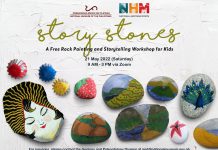What Could It Be? Let Me Figure It Out In My Own Sensory Way!
Happy Birthday! Your child is three years old! Three-year-old children take delight in themselves and have an innate desire to learn about the world around them. Early childhood is a time when young children’s vocabulary grows each day. Communication is therefore critical in each stage of early childhood development.
Talking with your child about what happened throughout the day will encourage the growth of his or her vocabulary. You will see that most three-year-olds listen carefully when they are introduced to new words. Most of them can also repeat the new word when prompted.
When a child encounters a new object, he or she will attempt to make sense of it by using his or her five basic senses. Your child will look at the object from many angles, turning it or bending it in different directions to get a better view. Kids will use their sense of touch to feel the object: is it smooth? Rough? Silky? Does the object have a smell? Does the object make any noise when shaken? In other instances, when children get too curious, they may even attempt to lick the object to know how it tastes!
Regardless of how improper licking an object may be, using the five senses is a developmentally appropriate way for any child to immerse in the world around them. It is their natural way of coping with new stimuli.
As your child explores an object you have chosen for them, sit back and watch as they actively try to figure it out. Their brains will be in constant motion as they ask themselves questions throughout the process. “Have I ever seen an object similar to this one? If so, how are they the same and/or different? What is this object? How does it work?”
Ask your child some questions as he or she explores the object to help them figure out what it is exactly. As your child interacts with the object, he or she is actively forming additional knowledge about the world around. Mistakes are also inevitable in this process. They may dismiss the object as something else, mistaking it for something similar they have seen before. In this case, you need to give them time to correct themselves. Ten seconds is ample time for your child to process the information and adjust his or her conclusion. Allow your child to learn from these errors in a positive way. Make sure you are there for support when necessary. When ready, name the object and have your child repeat the word. When your child feels comfortable with the object, have him or her show another child how the object works. This engaging experience gives full meaning to the name and definition of the object.




